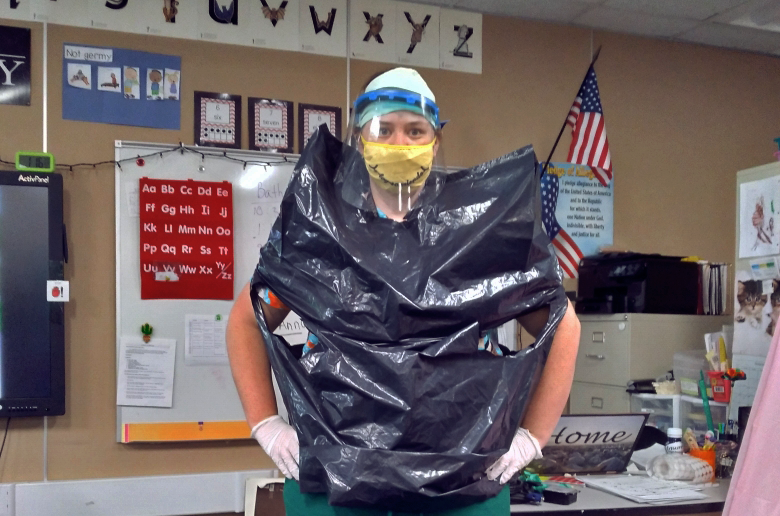Washoe County teachers and students are returning to school and trying to adapt to a new normal during the COVID-19 pandemic. The district’s approach to reopening schools includes individualizing materials and maintaining social distance in the classroom, which might be uniquely challenging in special education classrooms.
For confidentiality, the identity of the teacher interviewed for this story won’t be shared to protect her from any form of retaliation. With that said, let’s jump into her 2020 special education classroom where she’s set to teach in-person.
“I’ve had to completely deconstruct my classroom and start it from the ground up as something completely new and different from what I had established from last year,” said the special education elementary school teacher. “We are not allowed to use cubbies so I had to completely wall off my cubbies. My room was orientated to be open flow for the kids so they could bounce between centers. I had a sensory learning center where they could explore outer space and they could build with blocks and threading and puzzles and all sorts of fun things.”
Fun things like pretending to play kitchen, practicing how to wash dishes and cook, playing with baby dolls to learn how to brush hair. These hands-on moments are the way she teaches her students, who are heavily impacted by disabilities, the fundamental skills to interact in their society.
Well, all of that is gone.
“We are not allowed to have any shared materials so I’ve had to buy boxes and bins and all sorts of storage devices for each individual student. I’ve given my students each a box with their own toys that we sanitize daily, each their own math box and each their own book box.”
Students have their own folder, their own scissors, glue and their own recess buckets with, yes, their own toys. But of course, these changes are happening to protect them from the possible spread of COVID-19.
“It’s been very different for them because they want to play with each other. They had their little toy boxes and one gal turned to another and said, ‘let’s play together’ and they were trying to pretend like they were playing family and we had to come over and say, ‘that’s too close, personal space’ and it was heartbreaking having to tell a student that she couldn’t play with her friend.”
- Noticiero Móvil tackles biodiversity, climate change and cultural reporting in Costa Rica
- Nevada colleges have long welcomed undocumented students, but face new challenges under Trump
- Restauranteur Jesús ‘Chuy Gutierrez dies
- How to Avoid Scams that Can Impact Your Immigration Status
- The Red Card: A Guide to Knowing Your Rights
The classroom environment isn’t the only thing that has changed for her students. She says her students are taken by surprise when they see their teachers in makeshift personal protective equipment, or PPE. She says she looks like a space alien to them. According to her, she received word from the district just a few days before the start of the school year that special education teachers would receive special PPE, items like face shields, masks, gloves and gowns.
“Now that school has started we have not received the gowns that we were promised we would have, we’ve just been waiting for them. We haven’t heard anything and so what we have been doing is we cut holes out of trash bags and we wear trash bags when we diaper our students.”
In her classroom, they deal with bodily fluids on a day-to-day basis. During the first couple of days of school, she’s used 30 pairs of gloves each day because of the need for direct contact when she changes a diaper or when she helps a child use their walker. This teacher still hasn’t received information about how to clean off her PPE and that information is not listed in the district’s reopening and outbreak plans online.
As for distance learning, she says that process remains unclear.
“It’s going to be a challenge. I have some families without Wi-Fi. I have some who, [because] their student is very low functioning, their student requires very hands-on and very experienced learning and teaching techniques.”
She’s worried about what she says has been a lack of guidance and accountability from the district. Most of all, she’s worried about the exposure her students are facing, as most are immunocompromised.
This article is part of a collaboration with KUNR public radio. The original English version was written by Stephanie Serrano on August 25.
